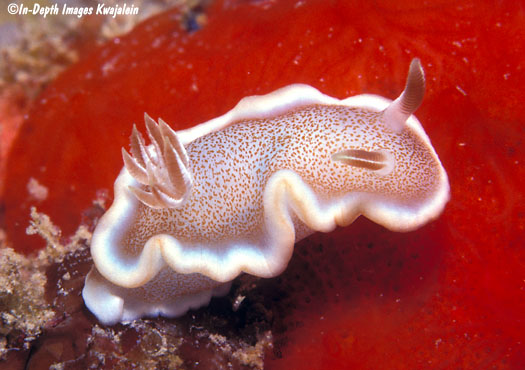
Glossodoris rufomarginata is one of the most commonly observed nudibranchs in Hawaii. I worked on these while at the university and counted multiple thousands of specimens on various reefs around Oahu. They prefer relatively shallow reefs where there are ledges and caves where their sole food source, a dark gray sponge named Cacospongia, lives. The nudibranchs are nearly always found on or near the sponge. For some years, this species was known in Hawaii as Chromodoris or Chromolaichma youngbleuthi, named in 1969 when it was thought that it was something new. It was later determined that an earlier name was the rufomarginata given by Bergh in 1890. This species is found throughout the Indo Pacific. We see it frequently in the Marshalls where individuals grow much larger.

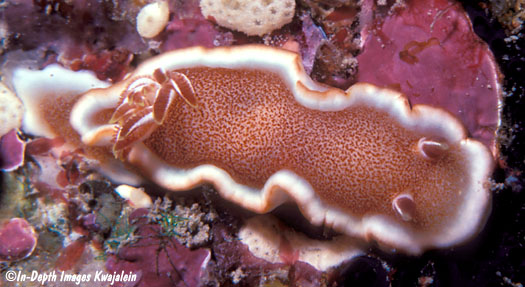
The animal below is protruding its mouth parts to graze on the gray sponge.
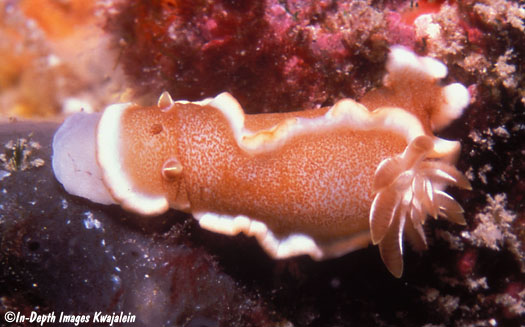
Their white spiral egg masses can usually be found nearby.
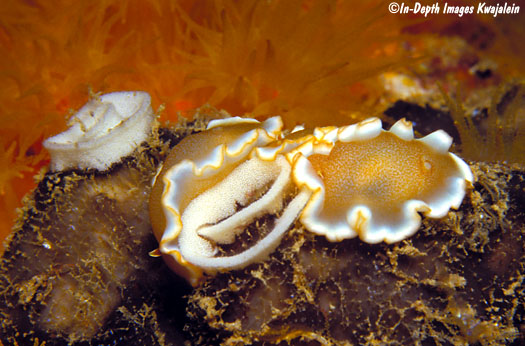
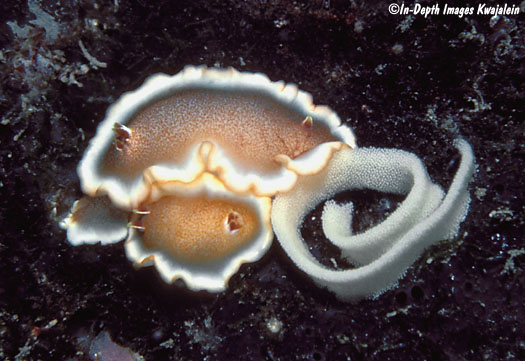
Often many can be found clustered on massive colonies of the prey sponge.
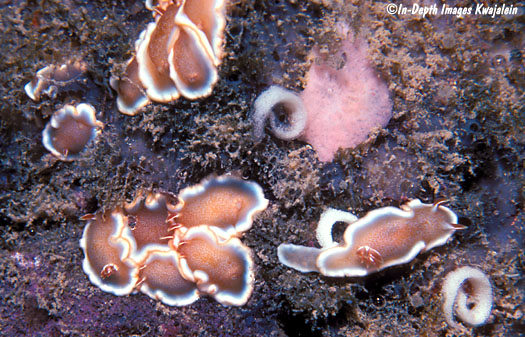
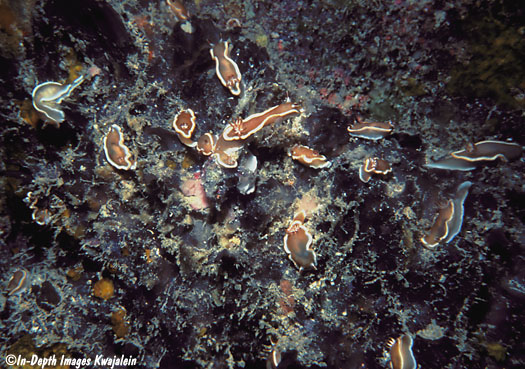
They are often found in caves that also support the orange tube coral Tubastraea coccinea.
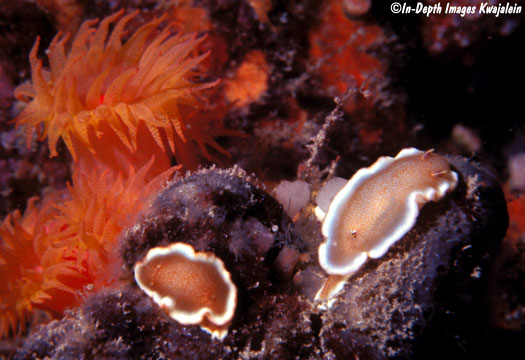
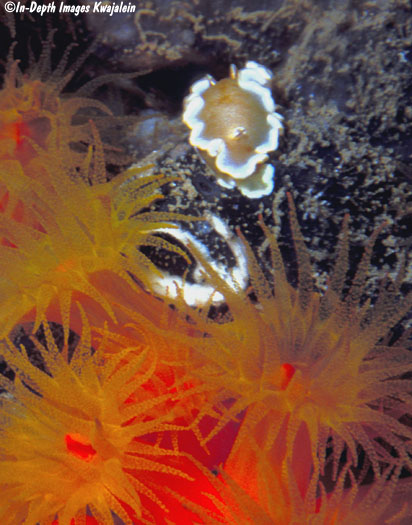
As part of my research, I needed a way to determine if transplanted Glossodoris rufomarginata were staying where I put them or wandering away. Since they all look pretty much alike, it was difficult to try to track individuals. However, it was found that a bit of the stain methylene blue dripped into an aquarium would rather quickly be taken up by any of the nudibranchs within, and these could then be moved back out to the reef and tracked over time. The stain would gradually disappear and it seemed to not cause any problems for the nudibranchs.
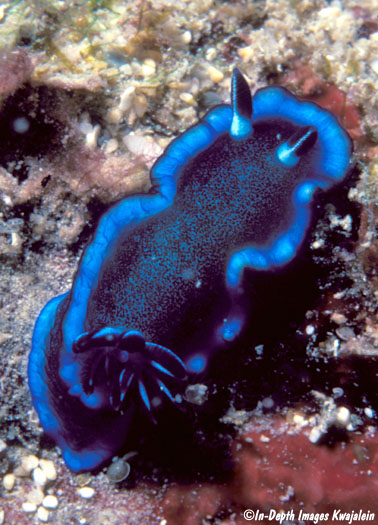
Created 20 April 2009